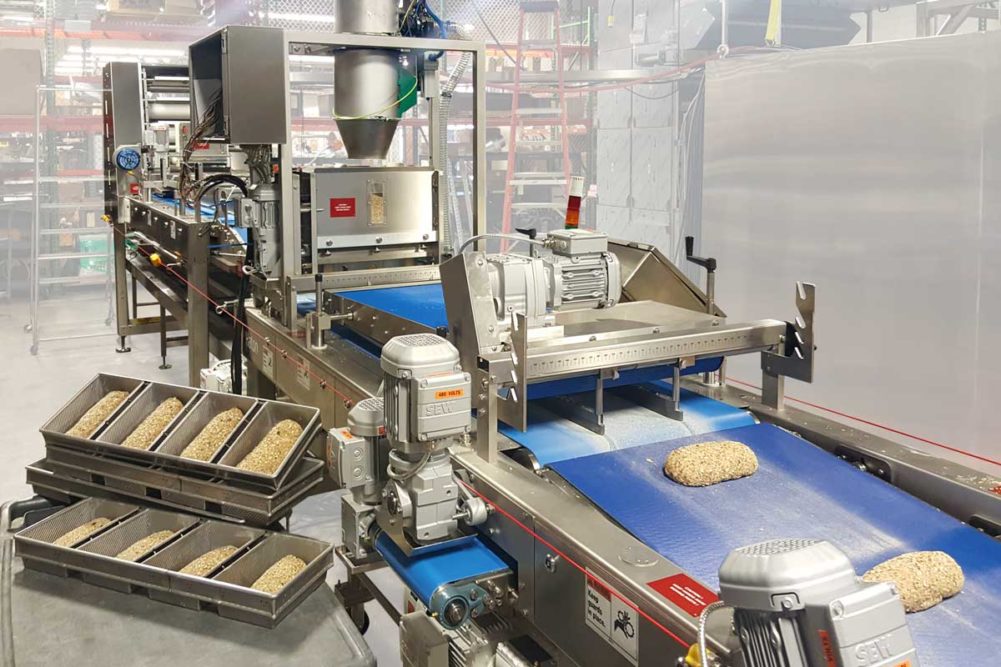Because their ingredients are so expensive, many Old World products such as brioche and gourmet cheese breads require several controls during production. Without the proper processes in place, bakers will find how unnecessary waste impacts their bottom lines.
“You want to be sure your stress-free system can accurately divide the dough piece so you're not giving away more product than the target weight,” said John Giacoio, vice president of sales, Rheon USA. “Our stress-free systems use load cells beneath the conveyor that weigh the dough piece before and after it is cut by the guillotine.”
The added fat in these breads can cause problems, especially if proper dough temperatures aren’t maintained within specific tolerances.
“Overworking these doughs will create heat, and this will reduce the quality of the final product,” Mr. Giacoio said. “It's important not to overwork these doughs and keep them cool.”
Mark Rosenberg, chief executive officer, Gemini Bakery Equipment/KB Systems, pointed out cheese, seeds and other inclusions in specialty breads require enhanced front-end monitoring.
“Reducing waste with improved weight control and overall line efficiency becomes even more important,” he said. “Recipe-driven, servo-controlled, automated bread lines are just the solution to improve yield from these more expensive doughs versus older bread systems.”
If the breads are enrobed in cheese, Jay Fernandez, manager of Middleby’s Bakery Innovation Center, pointed out that the key to accurate topping involves providing good coverage around the loaf. Glimek moulders, he added, can be outfitted with polyurethane belting for these high-fat products.
Other popular ingredients such as plant-based proteins, also create dough handling difficulties that can be easily remedied.
“With high-protein breads, gluten is the easiest protein to formulate, given that bakers already have experience with relaxers to reduce mix time and at makeup,” Mr. Fernandez said. “The bigger challenge is in using pulse flours, which compete with wheat for the free water in the dough system.”
Old World rye breads are also extremely tricky to pan for several reasons.
“Rye bread dough is extremely sticky and fluid,” said Hans Besems, executive product manager for AMF Tromp, an AMF Bakery Systems brand. “So, if you would like to handle this as a free-standing product, you’ll have to use excess flour to prevent sticking and tearing of the dough.”
[Related reading: Creating artisan-style bread in a pan]
In addition, rye bread doughs pose other challenges such as maintaining weight accuracy, retaining crumb stability and requiring proper steaming to develop the proper texture and crust during proofing and baking, noted Matt Zielsdorf, director of sales for Fritsch, a Multivac company.
Some of those issues come from the unusually large size of many hearty rye loaves with formulas that hail from Germany, Eastern Europe and Scandinavian countries. In some instances, even where pans are used, they can range from 3- to 6-feet long.
“When making traditional rye or Old World breads that are often made in 3- or 5-lb loaves, you can handle them like your other artisan breads as long as you have accounted for the larger loaf in your makeup section,” Mr. Giacoio said. “Some of our dividers can scale dough pieces as large as 20 lbs.”
Because these larger loaves are typically used as sandwich breads, they require a tight cell structure to prevent condiments from leaking out.
“You should still not stress the dough at the divider,” Mr. Giacoio said. “The tighter cell structure can be done at the moulder.”
Patricia Kennedy, president, WP Bakery Group USA, said pumping out heavy rye loaves at higher capacity requires specific equipment. WP’s Reyna lines, for instance, are designed to process dough weights up to 5 kg (11 lbs).
“After these products are cut into multiple loaves after baking, the process challenge here is more in the slicing and packaging of the breads,” Ms. Kennedy said.
This article is an excerpt from the October 2020 issue of Baking & Snack. To read the entire feature on specialty pan bread, click here.






